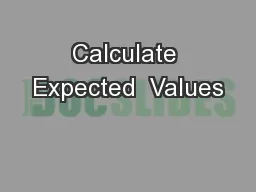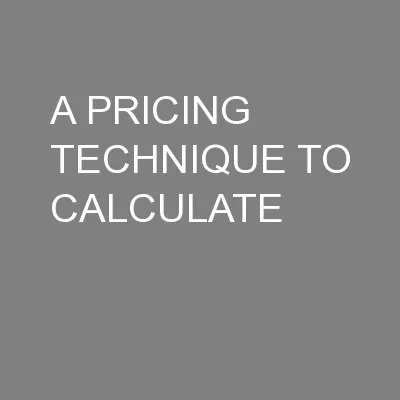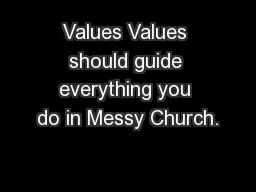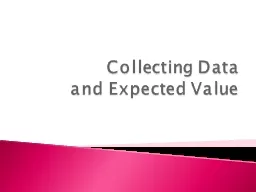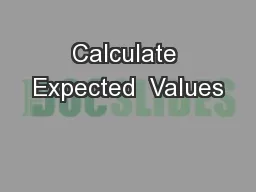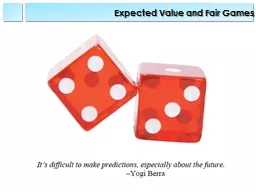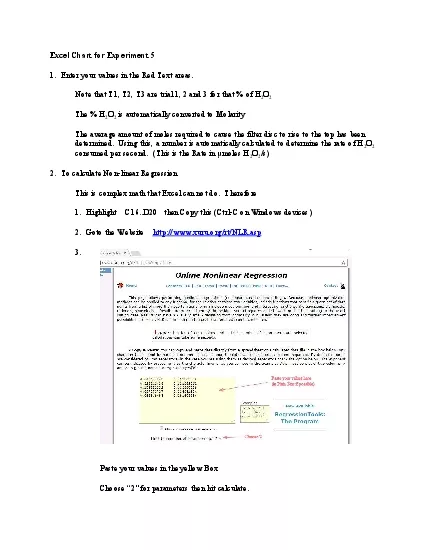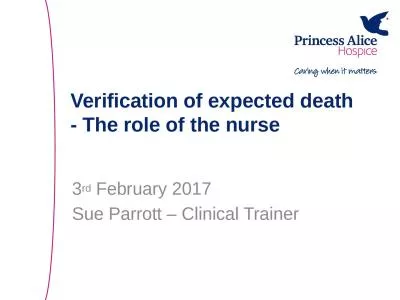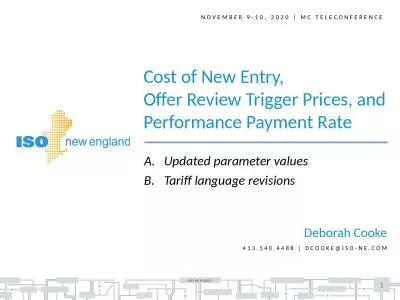PPT-Calculate Expected Values
Author : pamella-moone | Published Date : 2018-11-04
of Alternative COA Principles of Cost Analysis and Management 1 Ever had a vacation disaster Car trouble Lost luggage Missed flight Something worse How did that
Presentation Embed Code
Download Presentation
Download Presentation The PPT/PDF document "Calculate Expected Values" is the property of its rightful owner. Permission is granted to download and print the materials on this website for personal, non-commercial use only, and to display it on your personal computer provided you do not modify the materials and that you retain all copyright notices contained in the materials. By downloading content from our website, you accept the terms of this agreement.
Calculate Expected Values: Transcript
Download Rules Of Document
"Calculate Expected Values"The content belongs to its owner. You may download and print it for personal use, without modification, and keep all copyright notices. By downloading, you agree to these terms.
Related Documents

